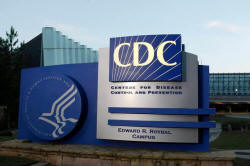|
 Autism
rate among U.S. children held steady 2010-2012: CDC Autism
rate among U.S. children held steady 2010-2012: CDC
 Send a link to a friend
Send a link to a friend
[April 01, 2016]
By David Beasley
ATLANTA (Reuters) - Autism rates among U.S.
children were unchanged between 2010 and 2012, but it remains too early
to know whether a rise in diagnoses over the last decade has stabilized,
researchers at the Centers for Disease Control and Prevention said on
Thursday.
|
|
 In 2012, one out of every 68 school-aged children in the United
States had autism, which is the same prevalence as in 2010,
according to a new study by the CDC. In 2012, one out of every 68 school-aged children in the United
States had autism, which is the same prevalence as in 2010,
according to a new study by the CDC.
Still, some areas of the United States bucked the national trend,
with autism cases rising in New Jersey and Wisconsin, said the
study's lead author, Daisy Christensen.
Also, autism may be under-diagnosed in other parts of the country
and among black and Hispanic children, she said.
"We don't know why the prevalence of autism did not change
significantly," said Christensen, noting that more time and data
would clarify the trendline. "It's too soon to tell whether the
percentage of children with autism is stabilizing."
Autism, formally known as autism spectrum disorder, has become
increasingly common in the United States over the last decade.

A decade ago, the CDC estimated that one out of every 150 children
had autism, said Michael Rosanoff of the advocacy group Autism
Speaks.
"Those 'one out of 150' children 10 years ago are now adults," he
said. "This is not just about early detection and early
intervention, it's about providing services to a large autism
population across the life span."
Some experts have cautioned that the apparent rise could come as
parents and doctors grow more aware about diagnosing the disorder.
The CDC study found that timely diagnosis remains an issue, with
fewer than half of autistic children receiving developmental
evaluations by the recommended age of 3.
[to top of second column] |

"Regardless of what the number is, we know autism is common," said
Stuart Shapira, chief medical officer for CDCís National Center on
Birth Defects and Developmental Disabilities.
"Research shows that the earlier a child with autism is identified,
the better," he added. "The sooner the child starts receiving
services, the sooner the child will reach his or her full
potential."
(In first sentence, corrects full name of CDC in third paragraph
corrects to exclude Missouri from states with rising cases.)
(Editing by Letitia Stein and Matthew Lewis)
[© 2016 Thomson Reuters. All rights
reserved.] Copyright 2016 Reuters. All rights reserved. This material may not be published,
broadcast, rewritten or redistributed.
 |